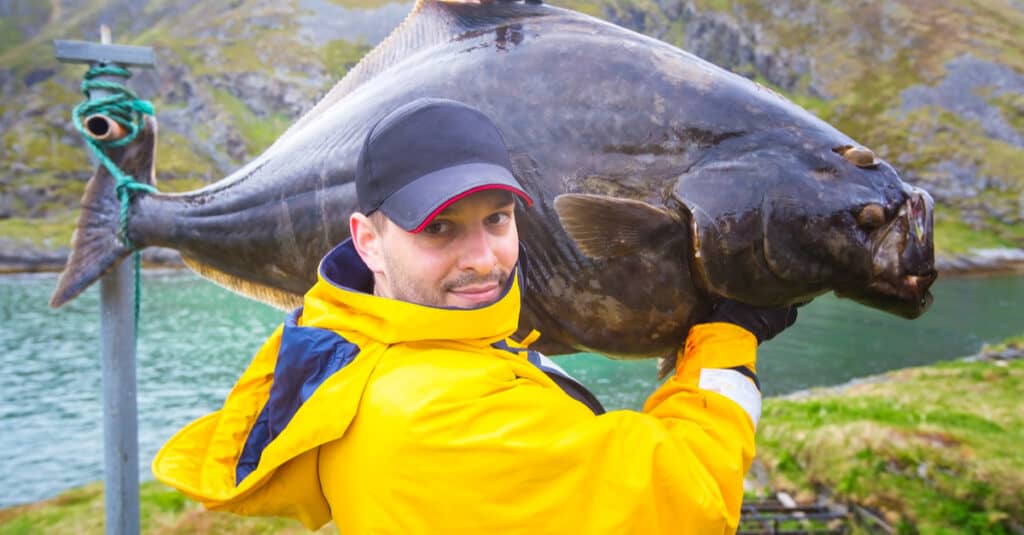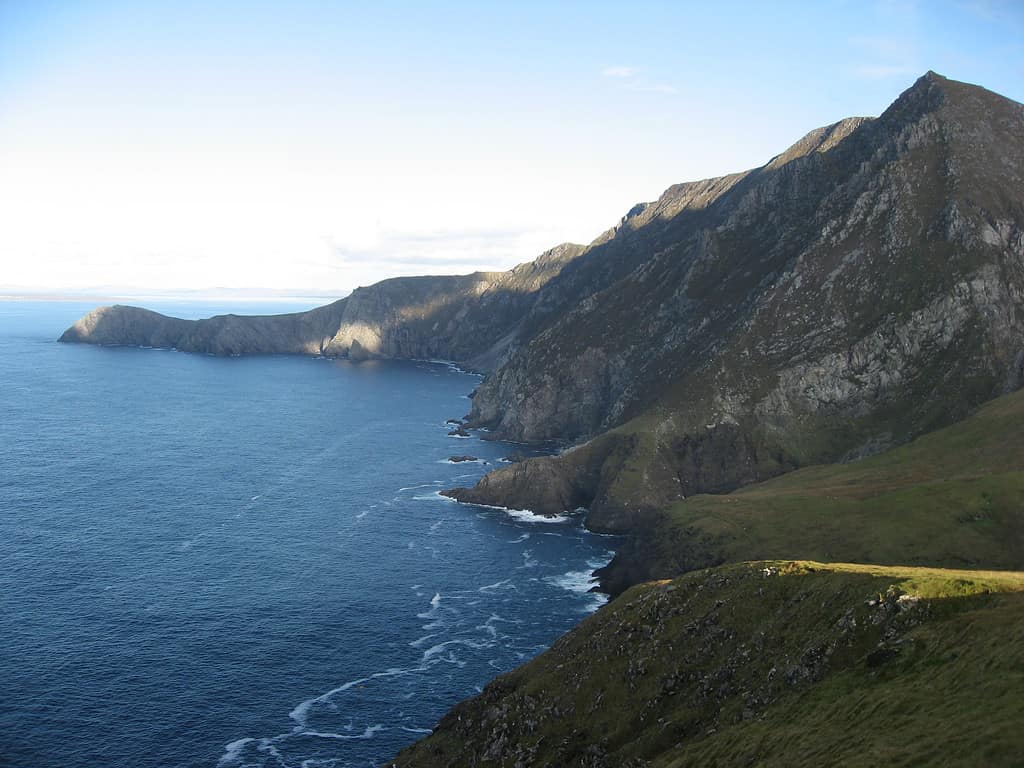One of the most popular fish species to fish for in Canada is halibut. It’s a tough fish to catch as it’s very strong, fast, and nearly naked to the eye. They blend well with the bottom of the sandy ocean. Smaller halibut though are easier to catch than larger ones, which is why new records are so exciting! The largest halibut ever caught in Canada, for instance, is a jaw-dropping monster. Can you guess its size, or where it was caught?
What is the Largest Halibut Ever Caught in Canada?

Halibut can weigh over 700 pounds.
©Israel Patterson/Shutterstock.com
There are a few distinct halibut records in Canada, depending on the type. According to the IGFA, the largest Pacific halibut ever caught in Canada listed weighed 172 pounds. Glen Oliver caught this beast on June 21, 1992, in Langara Island, British Columbia, Canada. Although impressive, this record is nowhere near as large as the world record. The All Tackle World Record for Pacific Halibut is 459 pounds. On June 11, 1996, Jack Tragis reeled in this monster using a 130-pound line in Dutch Harbor, Alaska.
While the largest all-tackle Pacific halibut ever caught in Canada was just under 200 pounds, heavier fish have been caught! These records though haven’t been verified. Some reports even claim to have caught Pacific halibut as heavy as 300 pounds, or more. Atlantic halibut are just as big, although most world records are set in Greenland and Norway.
About Halibut
Technically, halibut isn’t just one fish. This name can refer to about three flatfish in the genera Hippoglossus and Reinhardtius. Generally, though, most people think of Atlantic and Pacific halibut. Follow along to learn more about these fish, including their average sizes!
Appearance and Size

©Alexey Savchuk/Shutterstock.com
Pacific halibut are massive. These flat, large-eyed fish have diamond-shaped bodies. They are very long, with a width of only about a third of their length. Pacific halibut also have crescent-shaped tails and unique markings. One side of their body is light, which helps them stay safe from predators and hunt for food. The other side is dark, close to the color of the bottom of the ocean. This can make them hard to see. So, how big can these fish get? Pacific halibut may reach as long as 8 feet and weigh up to about 500 pounds.
Atlantic halibut are very similar. They may grow larger than Pacific halibut, but only barely. They also lie on the left side of their bodies and have speckled markings on their dark side.
Distribution and Habitat
As their name suggests, Pacific halibut live on the continental shelf of the North Pacific Ocean and Bering Sea. They are commonly caught off the coast of Canada. You can also catch them near Washington, Oregon, and California. These strong swimmers are mostly found on or close to the bottom of the ocean.
Atlantic halibut, on the other hand, live in both the eastern and western portions of the North Atlantic. They have a wide range and can be caught from parts of Canada to Virginia in the United States. Atlantic halibut also live off the coast of Iceland, the United Kingdom, Ireland, and northern Europe to Russia.

You can catch halibut off the coast of Ireland.
Diet
Halibut aren’t picky eaters, although the specific food depends on their environment. However, these fish generally consume other fish of smaller or similar size, crustaceans, and cephalopods. Their diet though also varies depending on their age. Young halibut mostly feed on plankton until they turn one.
Halibut are excellent hunters. They are opportunistic feeders that mainly feed on animals found at the bottom of the sea.
Predators
The main predators of halibut are humans, although they are also hunted by large marine animals like sea lions, orca whales, and sharks. However, young and small halibut are more vulnerable to attacks from smaller predators like large fish.
The photo featured at the top of this post is © Han Maomin/Shutterstock.com
Thank you for reading! Have some feedback for us? Contact the AZ Animals editorial team.







